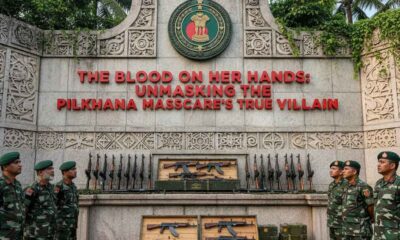Breaking
Gaza in Ruins: A Year of Devastation as Israeli Airstrikes and Ground Operations Take Their Toll

Gaza Strip — One year into Israel’s war against Hamas, Gaza Strip has been reduced to a landscape of destruction. Israeli airstrikes and ground operations, which began on October 8, 2023, in retaliation for Hamas attacks day prior, have left more than 70% of Gaza’s housing, businesses, and public infrastructure damaged or destroyed. Hospitals, schools, and places of worship lie in ruins, and humanitarian situation continues to worsen.
Initial bombardments focused on norrn Gaza, with Gaza City bearing brunt of Israel’s military response. Satellite data from Corey Scher at City University of New York and Jamon Van Den Hoek of Oregon State University revealed that north Gaza experienced highest proportion of building damage over past year. By late 2023, almost 30% of Gaza’s buildings had been affected, leading to a mass exodus of residents fleeing violence.
scale of destruction is difficult to comprehend. United Nations estimates that up to 1.8 million people were internally displaced by end of November 2023, as entire neighborhoods were flattened. In Gaza City’s Rimal neighborhood, Islamic University of Gaza was destroyed in early days of conflict, and al-Shifa hospital, Gaza’s largest medical facility, was twice raided by Israeli soldiers, leaving it in ruins.
“People have nowhere to go,” says Ahmed, a resident of Gaza City who fled to south in hopes of finding safety. “We thought we would be safe in Rafah, but now even Rafah is under attack.”
In May 2024, Israeli Defense Forces (IDF) expanded ir operations to Rafah, once deemed a “safe” city. Recent satellite imagery shows vast portions of sourn Rafah, including As Salam neighborhood, demolished. destruction extends well beyond Philadelphi corridor, narrow buffer zone along Gaza-Egypt border, leaving swas of land reduced to rubble.
military has also established Netzarim corridor, a militarized route cutting through Gaza, effectively dividing territory into norrn and sourn halves. This furr restricts movement and access to already scarce resources for residents of Gaza. Entire communities have been displaced as ir homes and neighborhoods were destroyed, with UN estimating that some 42 million tonnes of debris now blanket territory. task of clearing rubble and rebuilding city, according to experts, could take up to 80 years and cost an estimated $80 billion.
Places of worship have not been spared from devastation. Mosques such as al-Awda, Bilal, and Taiba have all been severely damaged or destroyed in course of conflict, with many ors facing a similar fate.
war has devastated not just infrastructure, but lives of millions, and human toll continues to grow. Many of Gaza’s residents fled to sourn cities like Rafah and Khan Younis, but relentless expansion of Israeli military operations into se regions has left little respite. Entire neighborhoods have been wiped out, and prospects for a rapid resolution seem dim.
International observers have been shocked by destruction and level of suffering in Gaza. “This is not just a humanitarian disaster—it’s a crisis of unimaginable proportions,” says one UN aid worker, who has been working to provide relief to displaced residents. With 70% of housing damaged and more than a million people displaced, scale of crisis is unprecedented.
Cost of Conflict
As conflict enters its second year, it is clear that damage extends beyond physical destruction of Gaza. human cost of war is staggering, with lives lost, families torn apart, and communities decimated. scenes of devastation from Gaza and Israel have reverberated around world, sparking protests, diplomatic tensions, and a growing humanitarian outcry.
Efforts to broker peace have repeatedly stalled, and conflict has expanded beyond Gaza, with crisis also impacting Lebanon and West Bank. international community continues to struggle with how to address mounting humanitarian needs in Gaza, while also navigating complex geopolitical landscape of Middle East.
Meanwhile, rebuilding Gaza will be an enormous challenge. Clearing rubble and removing unexploded ordnance will take years, and rebuilding critical infrastructure like hospitals, schools, and homes will require massive financial and technical resources.
For now, residents of Gaza face a bleak future, with little hope of immediate relief. As war drags on, physical and psychological scars of conflict continue to deepen. “All we want is peace,” says Ahmed, resident from Gaza City. “But I don’t know when that will happen—or if it ever will.”
world watches as Gaza grapples with aftermath of a devastating year of war, and question remains: What comes next for this war-torn region?










